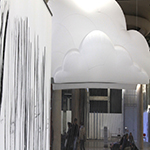Euroacademia Conferences
 Europe Inside-Out: Europe and Europeanness Exposed to Plural Observers (9th Edition) April 24 - 25, 2020
Europe Inside-Out: Europe and Europeanness Exposed to Plural Observers (9th Edition) April 24 - 25, 2020 Identities and Identifications: Politicized Uses of Collective Identities (9th Edition) June 12 - 13, 2020
Identities and Identifications: Politicized Uses of Collective Identities (9th Edition) June 12 - 13, 2020 8th Forum of Critical Studies: Asking Big Questions Again January 24 - 25, 2020
8th Forum of Critical Studies: Asking Big Questions Again January 24 - 25, 2020 Re-Inventing Eastern Europe (7th Edition) December 13 - 14, 2019
Re-Inventing Eastern Europe (7th Edition) December 13 - 14, 2019 The European Union and the Politicization of Europe (8th Edition) October 25 - 26, 2019
The European Union and the Politicization of Europe (8th Edition) October 25 - 26, 2019 Identities and Identifications: Politicized Uses of Collective Identities (8th Edition) June 28 - 29, 2019
Identities and Identifications: Politicized Uses of Collective Identities (8th Edition) June 28 - 29, 2019 The European Union and the Politicization of Europe (7th Edition) January 25 - 26, 2019
The European Union and the Politicization of Europe (7th Edition) January 25 - 26, 2019 7th Forum of Critical Studies: Asking Big Questions Again November 23 - 24, 2018
7th Forum of Critical Studies: Asking Big Questions Again November 23 - 24, 2018 Europe Inside-Out: Europe and Europeanness Exposed to Plural Observers (8th Edition) September 28 - 30, 2018
Europe Inside-Out: Europe and Europeanness Exposed to Plural Observers (8th Edition) September 28 - 30, 2018 Identities and Identifications: Politicized Uses of Collective Identities (7th Edition) June 14 - 15, 2018
Identities and Identifications: Politicized Uses of Collective Identities (7th Edition) June 14 - 15, 2018
Giorgio Vasari and Niccolò Machiavelli: Appetite for Peace and Glory
-
-

-
Presentation speakers
- Liana De Girolami Cheney, Universidad de Coruña, Spain
Abstract:
This study analyzes the literary and visual connections between war and peace made by both Machiavelli and Vasari, as exemplified in Giorgio Vasari’s portrait of Alessandro de’ Medici of 1555-60 (Palazzo Vecchio, Florence), which visually embodies the paradox of war and peace discussed in Niccolò Machiavelli’s The Art of War (1521). The approach here is iconographical, focusing on three issues. First, Machiavelli’s notions of condottiere, virtù, and war and peace in The Art of War are discussed in relation to Renaissance imagery, particularly in that produced as a result of Medicean patronage. Second, Vasari’s portrait of Alessandro de’ Medici is examined within the context of peace as revealed in Renaissance art and emblems. Finally, Vasari’s assimilation of Machiavelli’s notions are interpreted in relation to the painting. In I Ragionamenti (1560-88), Vasari associates the attribute of virtù to a good ruler and condottiere. But unlike Machiavelli, who connects virtù with Fortune, the goddess of change and opportunity, Vasari considers virtù, to be a quality associated with Mercury, the god of intellectual and cunning pursuits. No by accident, in the Palazzo Vecchio, Vasari depicts the imagery of Alessandro de’ Medici located directly below the figure of Mercury in the floor above. Vasari’s portrays the duke as condottiere, who excelled in military leadership and peacemaking. In this imagery, Vasari reveals the mercurial qualities of the duke, the cunning and intellectual astuteness, assisting his army in winning the war and achieving peace for the Florentine city-state. For Vasari, the duke’s achievement of peace depends on the intellectual guidance of Mercury on his military training and leadership skills and not on the whimsicality of Fortune, as in The Art of War. Machiavelli observes that a leader’s military success may be hindered at times by the vicissitudes of Fortune. -


















